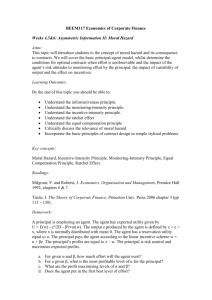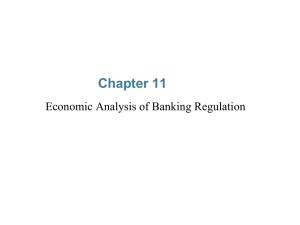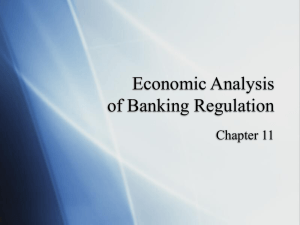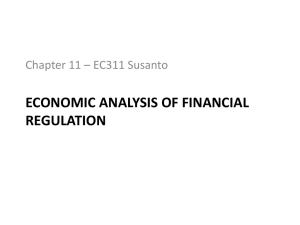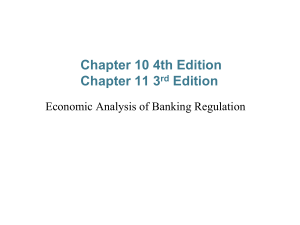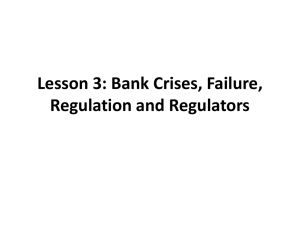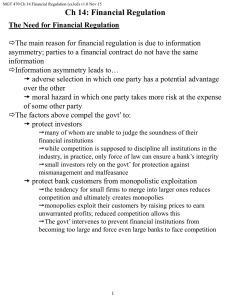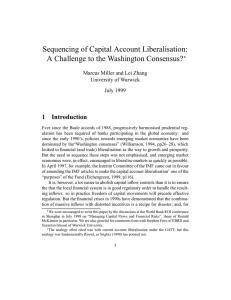Banking Regulation
advertisement
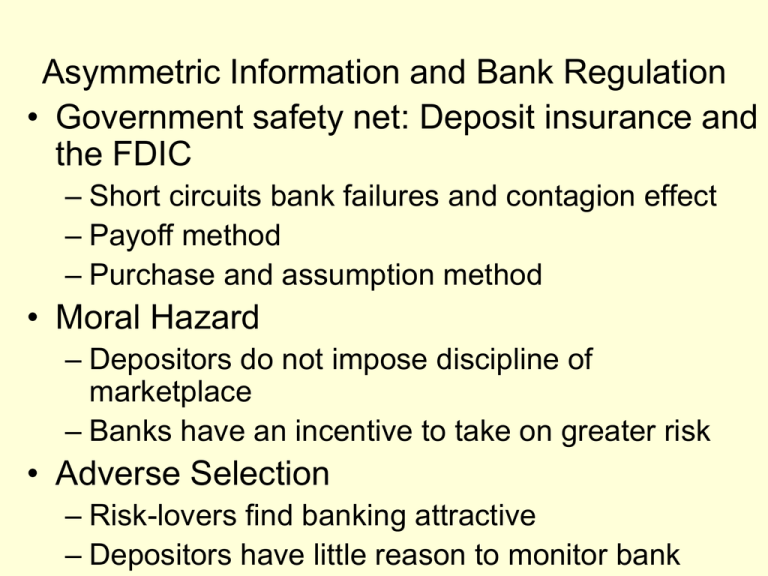
Asymmetric Information and Bank Regulation • Government safety net: Deposit insurance and the FDIC – Short circuits bank failures and contagion effect – Payoff method – Purchase and assumption method • Moral Hazard – Depositors do not impose discipline of marketplace – Banks have an incentive to take on greater risk • Adverse Selection – Risk-lovers find banking attractive – Depositors have little reason to monitor bank Too Big to Fail • Government guarantees of repayment to large uninsured creditors of the largest banks – Uses the purchase and assumption method • Increases moral hazard incentives for big banks • Larger and more complex banks challenge regulation – Increased “too big to fail” problem – Extends safety net to new banking activities increases incentives for risk taking • Keep banks from taking too much risk – Promote diversification – Prohibit holdings of common stock – Set capital requirements • Minimum leverage ratio • Basel Accord: risk-based capital requirements • Regulatory arbitrage • Monitor … CAMELS – Capital adequacy – Asset quality – Management – Earnings – Liquidity – Sensitivity to market risk • Disclosure requirements • Restrictions on competition 1980s S&L and Banking Crisis • Financial innovation increased risk taking • Increased deposit insurance moral hazard • Deregulation • Lack of management expertise • Rapid growth in new lending: real estate – Activities expanded in scope – Regulators at FSLIC lacked expertise • High interest rates/recession increased incentives for moral hazard 1980s S&L and Banking Crisis: • Regulatory forbearance by FSLIC – Insufficient funds to close insolvent S&Ls – Established to encourage growth – Did not want to admit agency was in trouble • Zombie S&Ls taking on high risk projects and attracting business from healthy S&Ls • Politicians lobbied by S&L interests • Competitive Equality in Banking Act of 1987 – Inadequate funding – Continued forbearance The Financial Institutions Reform, Recovery, and Enforcement Act of 1989 • Regulatory apparatus restructured – Federal Home Loan Bank Board relegated to the OTS – FSLIC given to the FDIC – RTC established to manage and resolve insolvent thrifts • Cost of the bailout approximately $150 billion • Re-restricted asset choices • Increased core-capital leverage requirements • Imposed same risk-based capital standards as those on commercial banks • Enhanced enforcement powers of regulators • Did not resolve underlying moral hazard and adverse selection problems



